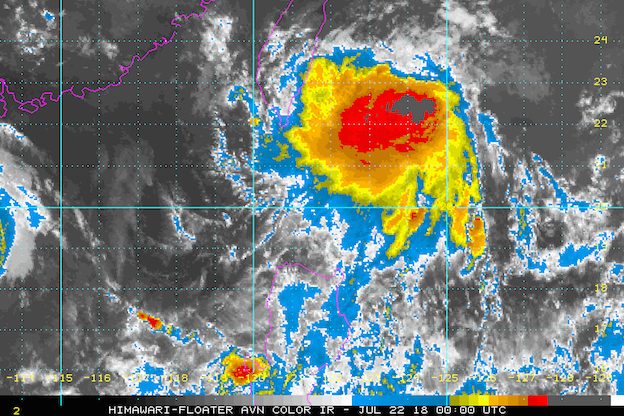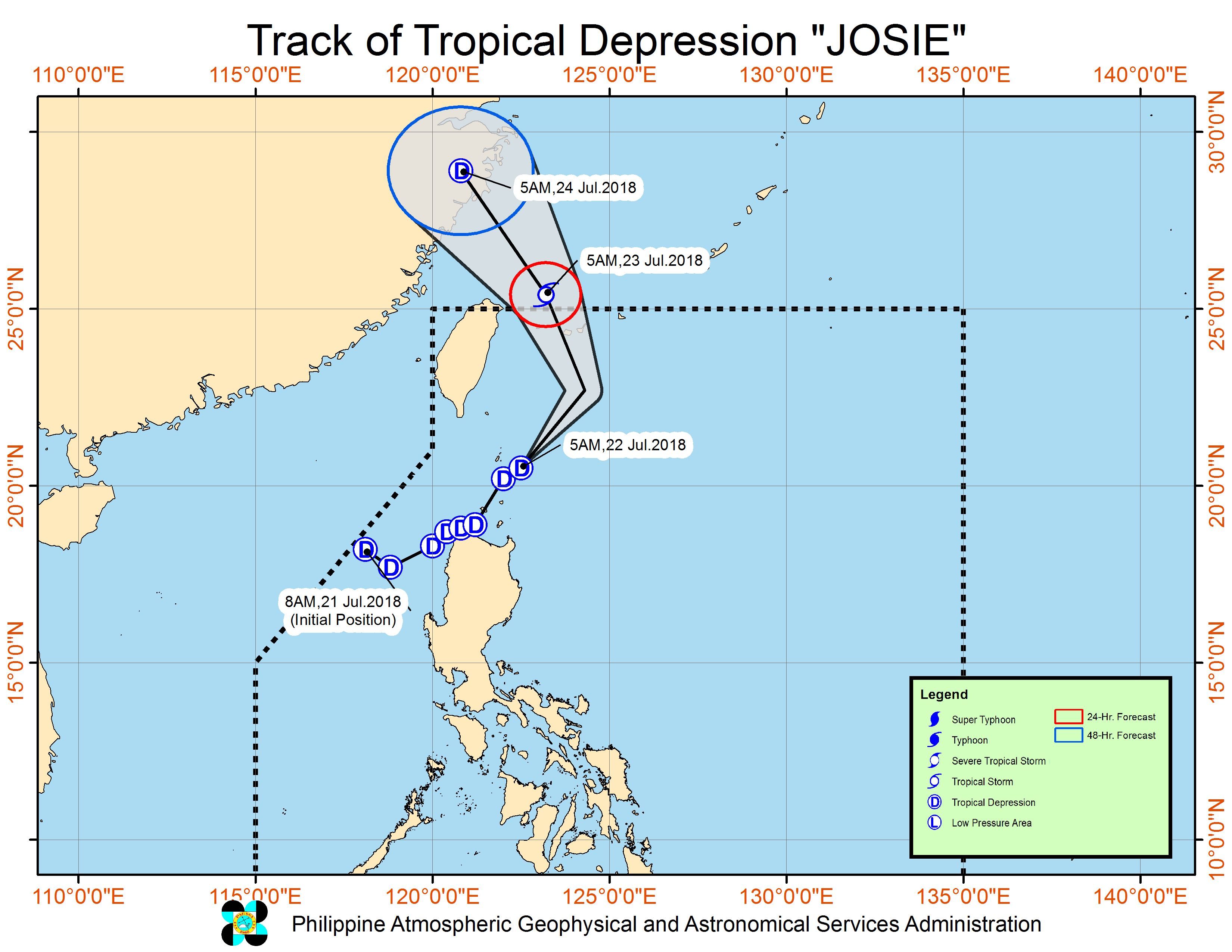SUMMARY
This is AI generated summarization, which may have errors. For context, always refer to the full article.

What’s the weather like in your area? Report the situation through Rappler’s Agos or tweet us at @rapplerdotcom.
MANILA, Philippines – Tropical Depression Josie maintained its strength as it began moving toward the Philippine Sea early Sunday morning, July 22.
In a bulletin issued 8 am on Sunday, state weather bureau PAGASA said Josie is already 85 kilometers east northeast of Basco, Batanes, still moving northeast at a relatively fast 35 kilometers per hour (km/h).
The tropical depression has maximum winds of 60 km/h and gustiness of up to 75 km/h.
Signal number 1 is still raised over Batanes and the Babuyan Group of Islands. Occasional rains and gusty winds are expected in these areas.
Josie also continues to enhance the southwest monsoon or hanging habagat, which is affecting Luzon and the Visayas.
Moderate to heavy monsoon rain is hitting Metro Manila, Central Luzon, the Ilocos Region, the Cordillera Administrative Region, the rest of Cagayan Valley, Oriental Mindoro, Occidental Mindoro, Rizal, Cavite, and Batangas.
At 7 am on Sunday, an orange rainfall warning was raised for Cavite, which means intense rain and flooding is threatening. A yellow rainfall warning was also raised for Metro Manila, Bataan, Laguna, Batangas, and Rizal, which means heavy rain and possible floods in low-lying areas.
The Visayas and the rest of Luzon will also have occasional rainshowers due to the southwest monsoon. (READ: Volunteer for Agos today)
Areas affected by Josie and the southwest monsoon should stay on alert for possible flash floods and landslides. This is especially important as lands in parts of Luzon have already been saturated from the heavy rainfall in the past week. (READ: Monsoon rains increase risk of landslides in Baguio, Benguet)
Dagupan City in Pangasinan was placed under a state of calamity on Saturday, July 21, due to massive floods triggered by rain from the southwest monsoon.
PAGASA also warned that sea travel remains risky in the seaboards of Northern Luzon and in the western seaboard of Central Luzon, especially in areas under signal number 1. (READ: FAST FACTS: Tropical cyclones, rainfall advisories)
Based on its latest forecast track, Josie is expected to leave the Philippine Area of Responsibility (PAR) on Monday morning, July 23. That’s the day of President Rodrigo Duterte’s 3rd State of the Nation Address (SONA).

Aside from Josie, PAGASA is also monitoring a low pressure area (LPA) still outside PAR. Further details on this LPA will be given as soon as they become available.
Josie is the Philippines’ 10th tropical cyclone for 2018. The country usually gets an average of 20 tropical cyclones per year. (READ: LIST: PAGASA’s names for tropical cyclones in 2018)
Josie comes on the heels of Severe Tropical Storm Inday (Ampil), which left PAR at 1 am on Saturday. Inday did not make landfall in the Philippines, but it enhanced the southwest monsoon.
PAGASA declared the start of the rainy season last June 8. – Rappler.com
Add a comment
How does this make you feel?
There are no comments yet. Add your comment to start the conversation.